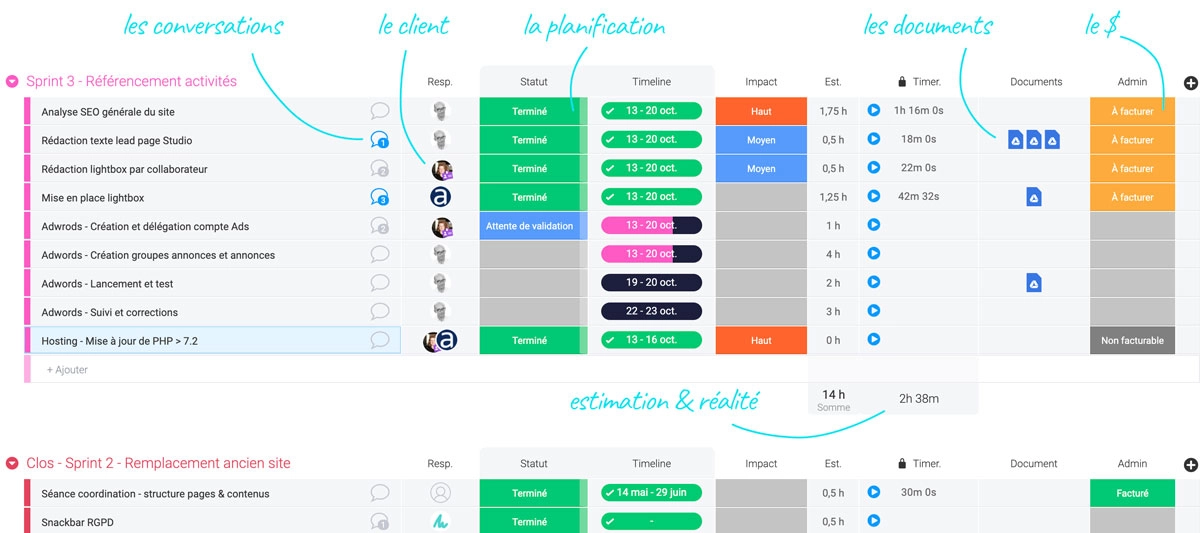Transparency has become a trendy value used in all sorts of ways, and is on the menu of all political programs and in the mouths of all business leaders. But, in concrete terms, what does it mean to be transparent? In this article, we take a look at the concept of transparency: its advantages, its drawbacks as well as some tools to help you set up an open and efficient work environment within the company.
What is transparency?
By the time you finish reading this sentence, about 220,000 new posts will have appeared on Facebook and 23,000 new tweets will have been published. At a time when privacy has become an almost obsolete value, public opinion feels entitled to demand accountability. Gone are the days of scheming and decisions made behind closed doors, the time has come for transparency.
Source: Coupofy
A transparent company is one that publicly shares information that was previously kept private. Some organizations have made transparency a core part of their corporate culture. Examples include Buffer, Fitbit, WholeFood and Monday. While each of them approaches transparency differently, some key elements are now shared publicly such as:
- Recruitment practices
- Growth and performance figures
- Income and earnings
- Internal procedures
- ...
Rand Fishkin, the creator of SparkToro, an SEO startup, described transparency in a few words in a tweet:
Will sharing this data add value to my business? Then this is a marketing move. Will this sharing have value to others, even if my business doesn't benefit directly? That's transparency.
Transparency, just a fashion statement or a real value?
So transparency is on the rise. But is it just a passing trend or is it a true value worth investing in for your company?
The idea behind transparency is to encourage trust. Both customers' and employees' trust. Transparency creates a climate for commitment, cooperation, collaboration and innovation.
A lack of transparency leads to a lack of trust and a deep sense of insecurity - Dalai Lama
Transparency creates a climate of security and earns the respect of the company's customers. It shows them that you have nothing to hide. In a world where suspicion is the order of the day, gaining the trust of those who allow you to grow is definitely not a luxury.
While it is fairly easy to understand how transparency helps to inspire trust from a business point of view, i.e. in the company-customer relationship, it is sometimes less obvious to understand how transparency has a positive effect within work teams.
Benjamin Tierny, CEO of Dernier Cri, explains why transparency is important to his team:
We wanted our employees to be involved at all levels of the strategy and to give their best. And for that we needed transparency.
Very often, a lack of transparency on the part of the leaders will lead to a feeling of insecurity, an atmosphere that is not conducive to innovation and self-improvement. Transparency allows the members of the company to feel involved, they are thus valued and put in conditions favorable to their development.
At the end of the day, if you want people to make smart decisions, you have to give them access to all the information that's available. And obviously, if you want them to make the same decisions you would make at their scale, you have to give them access to the information you have - - Joel Gascoigne - CEO of Buffer
Yes, but... I don't want my competitors to know my methods.
Sure, the more transparent you are, the clearer your competitors will be about what you do. But let's be honest, your competitors have many other ways to find out about your methods, and what you have to gain far outweighs that. Sharing your information shows that you are confident in your product and your methods. More than words, it's factual evidence of your confidence.
Yes, but... our mistakes are then public and I don't want to spend my life justifying myself!
Making mistakes happens to everyone. You are human, your team and your customers are human. Of course, admitting it is not really pleasant. But not hiding your mistakes is also a good way to face them and deal with them: you don't really have a choice. It is therefore an extraordinary way to improve.
The culture of opacity and the fear of error is, on the contrary, particularly harmful: dysfunctions and bad choices are covered up. They continue to work under the radar at a high cost.
Transparency in the real life of the company
We are convinced that transparency not only promotes the growth of the company, but also contributes to the well-being of our customers and employees.
However, creating a transparent environment is not about sharing all information randomly and arbitrarily. Flooding our customers and employees with tons of useless data.
On the one hand, this would be counterproductive, as it would go against the very principle of transparency, which is that everyone should have all the necessary information to make informed choices.
For this reason, it quickly became clear that we would need tools to carry out our transparency project. The main tool we implemented is Mondaya project management solution that we have detailed in an article.
Read the article: The best project management software
The objective of Monday is clearly stated on their website:
monday.com was founded because we believe that transparency and collaboration create a culture of ownership and empowerment. More empowered teams are more productive teams.
On a daily basis, Monday allows all our team members to plan their work. They also know exactly what the others are working on. The tool gives them a great deal of autonomy in managing their workload. Moreover, thanks to the integrated communication system, everyone can quickly know the progress of each project.
Example of transparency in a project. All information in one place.
On the client's side, sharing information creates a climate of trust. The client has real-time access to the project board and can easily follow the progress and even leave comments if necessary.
There are other similar tools, such as Buffer, Asana, or Wrike. It's up to you to choose the tool that will be the most adapted to your structure.
In conclusion
More than a value, transparency is becoming a culture, a characteristic feature of our time, and we all have something to gain from it, as long as we accept our share of humanity and responsibility.
Today, power is gained by sharing knowledge, not hoarding it. - Dharmesh Shah, co-founder of HubSpot
Sharing for better or for worse is the virtue of an era where we believe that knowledge must be accessible. And it may also be the key to our collective success.











Google Workspace superior to Microsoft 365
Hyperconnected: the brain at risk
Choosing a project management software